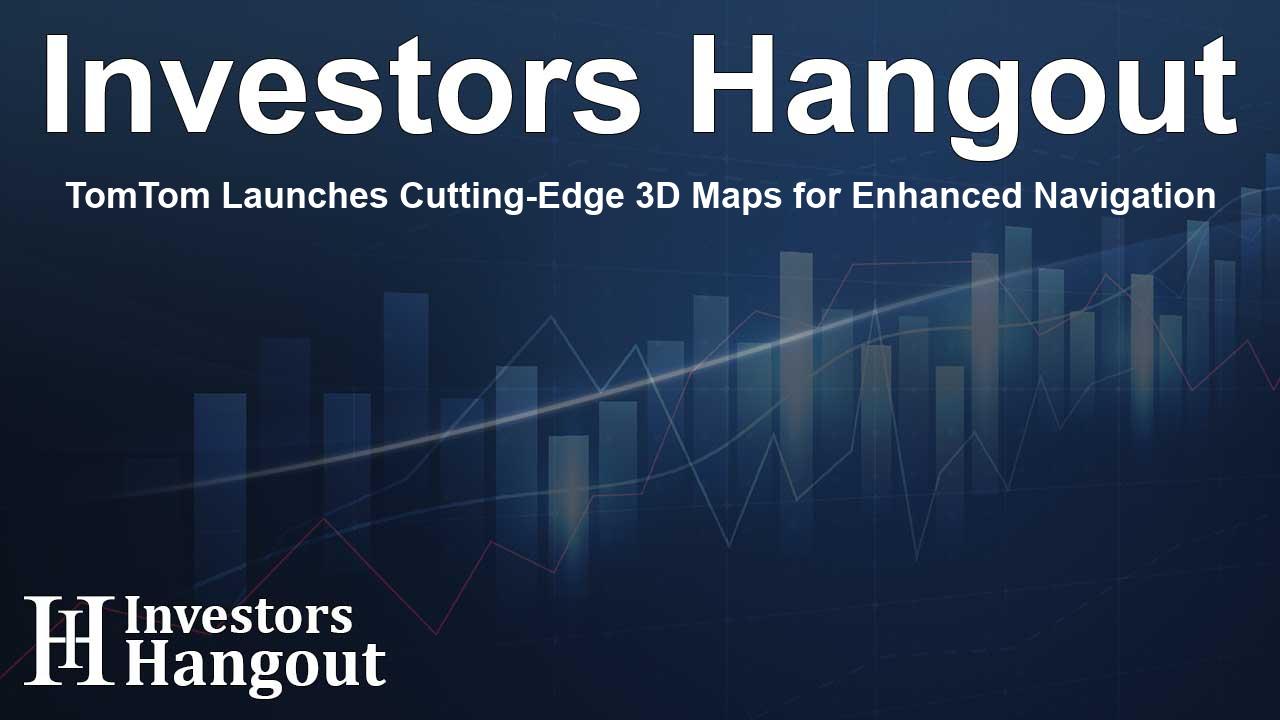TomTom Launches Cutting-Edge 3D Maps for Enhanced Navigation

TomTom Elevates Mapping Technology with 3D Lane Geometry
Amsterdam based TomTom (Amsterdam:TOM2) has reached a remarkable milestone by enhancing its Orbis Maps with state-of-the-art 3D lane geometry. This innovation provides users with exceptionally detailed lane-level precision across the globe, transforming how mapping technologies can be utilized in various sectors.
Unprecedented Coverage and Precision
The newly updated TomTom Orbis Maps never before seen lane-level accuracy, quantified in centimeters, expands its coverage exponentially. With advancements in AI, the maps are now continuously updated, allowing industries to leverage this technology for enhanced operational efficiency.
Impact on the Automotive Sector
Advanced Driver Assistance Systems (ADAS) have become standard in many new vehicles, relying heavily on accurate lane-level maps. As the movement towards automated driving accelerates, the demand for regular updates to these maps has surged. Until recently, the costs and resources required to maintain such maps were significant barriers.
Leveraging AI for Efficient Mapping Solutions
TomTom's innovative approach in the Orbis Maps development utilizes artificial intelligence to generate comprehensive 3D lane geometry across any type of road. This transformation is made possible through the integration of various data sources, including crowdsourced insights from dashcams, aerial imagery, and lidar surveys.
Benefits for Various Industries
The implications of these cutting-edge maps extend far beyond the automotive sector. For instance, logistics companies can significantly enhance their last-mile delivery processes by optimizing pickup and drop-off operations. This leads to notable time reductions and cost savings in transportation.
Urban Planning and Traffic Management
Urban planners also stand to benefit immensely from the granular data provided by TomTom Orbis Maps. The detailed lane-level insights support better traffic management, the development of bike lanes, and efficient public transport systems, paving the way for smarter city designs.
A Statement from Leadership
In the words of Mike Schoofs, Chief Revenue Officer at TomTom, “Our enhancements to Orbis Maps signify a transformative leap in mapping technology. The unmatched accuracy and coverage of our 3D lane geometry provide a versatile and cost-effective solution for businesses, propelling automated driving and enabling urban planners to make data-informed decisions.”
About TomTom
With a legacy exceeding three decades, TomTom is dedicated to shaping the future of mobility. The company consolidates billions of data points from millions of sources, constructing what is regarded as the world's smartest map. TomTom's offerings include routing, real-time traffic information, and application-ready maps tailored for drivers, businesses, and developers alike.
Headquartered in Amsterdam and supported by a global workforce of approximately 3,700 employees, TomTom empowers users across various sectors to innovate and advance mobility solutions.
Contact Information
Media Relations:
For media inquiries, please reach out to mediarelations@tomtom.com.
Investor Relations:
For investor-related questions, contact us at ir@tomtom.com.
Frequently Asked Questions
What improvements have been made to TomTom Orbis Maps?
TomTom has enhanced its Orbis Maps with immersive 3D lane geometry, providing lane-level accuracy and global coverage.
How does AI contribute to TomTom's mapping innovations?
AI allows for the efficient generation and continuous updating of 3D lane geometry by integrating various data sources.
What industries can benefit from these enhanced maps?
The automotive, logistics, and urban planning sectors can leverage the improved mapping technology for increased efficiency and safety.
Why is lane-level mapping important for automated driving?
Lane-level maps are critical for the accuracy and reliability of advanced driver assistance systems (ADAS) and automated vehicles.
How does TomTom’s approach in mapping differ from traditional methods?
TomTom combines crowdsourced data with advanced technologies, significantly reducing costs and resources compared to traditional mapping methods.
About Investors Hangout
Investors Hangout is a leading online stock forum for financial discussion and learning, offering a wide range of free tools and resources. It draws in traders of all levels, who exchange market knowledge, investigate trading tactics, and keep an eye on industry developments in real time. Featuring financial articles, stock message boards, quotes, charts, company profiles, and live news updates. Through cooperative learning and a wealth of informational resources, it helps users from novices creating their first portfolios to experts honing their techniques. Join Investors Hangout today: https://investorshangout.com/
Disclaimer: The content of this article is solely for general informational purposes only; it does not represent legal, financial, or investment advice. Investors Hangout does not offer financial advice; the author is not a licensed financial advisor. Consult a qualified advisor before making any financial or investment decisions based on this article. The author's interpretation of publicly available data shapes the opinions presented here; as a result, they should not be taken as advice to purchase, sell, or hold any securities mentioned or any other investments. The author does not guarantee the accuracy, completeness, or timeliness of any material, providing it "as is." Information and market conditions may change; past performance is not indicative of future outcomes. If any of the material offered here is inaccurate, please contact us for corrections.